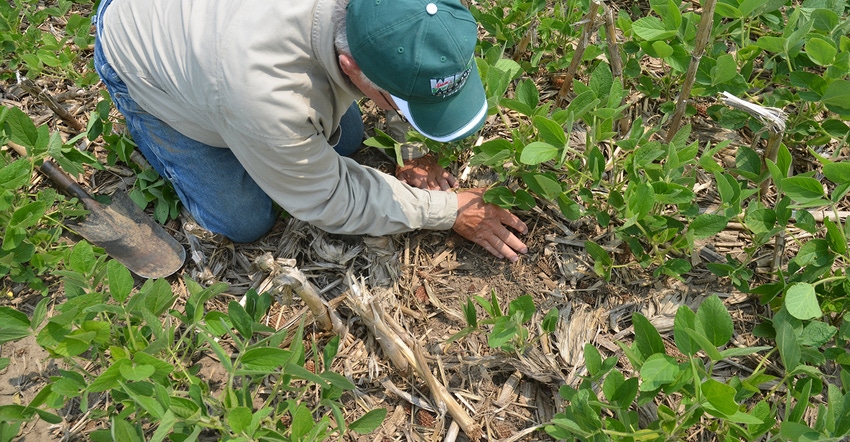September 18, 2017

Want to know if Prixar fungicide increased soybean yield in on-farm trials in South Dakota? Wonder if applying boron, copper and manganese will give you more bushels? How about Ascend growth regulator applied at R3 stage of soybeans? Has it increased yields for South Dakota farmers who tried it?
It’s now easier than ever before to get the answers to those and other soybean production questions. South Dakota State University Extension Service, the South Dakota Soybean Research and Promotion Council and the South Dakota Agricultural Experiment Stations have launched the On-Farm Research Program tool at onfarmresearch.sdsoybean.org.
You can look at results from trials farmers and SDSU Extension specialists and scientists have done, and you can post results from your research.
"We have a lot of farmers across the state completing a number of interesting research trials on their farms. This website brings the results to all South Dakota farmers and will help us identify trends and strategies to increase soybean yields,” says Matt Bainbridge, Ethan, S.D., chairman of the South Dakota Soybean Research and Promotion Council.
Increased yields
Craig Reicks, SDSU research associate, says some of more interesting ways to increase soybean yields that he’s seen on the website include:
• In 2014, trials in Minnehaha County and Hamlin County documented soybean yield increases of 4.5 bushels and 5.3 bushels per acre respectively with application of ESN slow-release nitrogen fertilizer to the soil surface.
• In 2015, in a Kingsbury County trial, yields rose 5.5 bushels in a high-yield environment (55-plus bushels per acre) when seed was treated with Tagteam and Acceleron.
• Also in 2015 in Edmunds County, yields jumped 2.7 bushels per acre in a medium field environment (35-55 bushels per acre) when foliar slow-release N was applied at the R3 growth stage.
• In 2016, there were three noteworthy results: 1) Priaxor foliar fungicide produced a 3.5-bushel-per-acre increase in yield in Kingsbury County (report 515); 2) increasing the soybean planting rate from 160,000 to 200,000 seeds per acre on hilltop in Kingsbury County increased yields 3.6 bushels per acre, and 3) a foliar application of slow-release N at the R4/early R5 stage of growth increased soybean yields 7.9 bushels per acre in high-yielding parts (55-plus bushels per acre) of a field in Aurora County.
New era of research
With GPS, variable-rate application, yield mapping and big data technology, on-farm research is entering a whole new era, says David Clay, SDSU plant science professor and one of the architects of the new reporting platform.
For more than a century SDSU faculty, research and SDSU Extension staff have worked with South Dakota farmers to conduct on-farm research. What sets this program apart is the easy access to results and the farmer-driven nature of the research.
"Essentially, farmers get to choose what treatment or practice they want to test, and our team will work with them to set up the protocol, collect the data, analyze the data and share the results on the website.”
Once results are available, they are posted anonymously for all to see on the website.
"Farmers are inundated with product information that will allegedly boost yields. The best way to know if it will work on their farm is to test it there. Or, visit this website, where they can see if a test has already been conducted on a field near them and review results," Clay says.
"This project fits perfectly within the research and outreach mission of our land-grant university," says David Wright, head of the SDSU Department of Agronomy, Horticulture and Plant Science. "Our team is eager to work with South Dakota's soybean farmers to expand knowledge and improve on-farm profits."
To learn more or set up your own on-farm field test, visit onfarmresearch.sdsoybean.org or contact Clay at [email protected] or Reicks at [email protected].
SDSU Extension Communications contributed to this article.
You May Also Like




